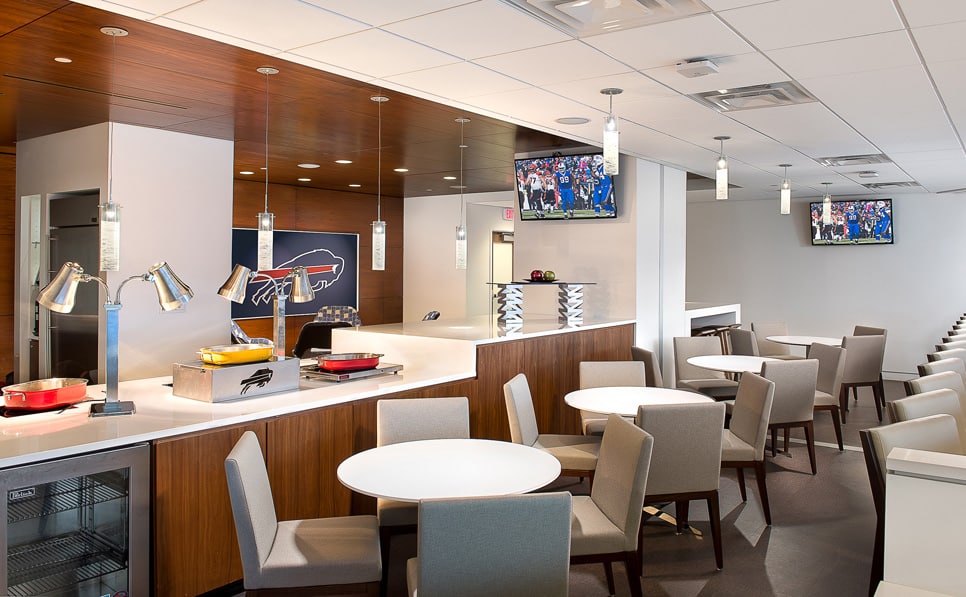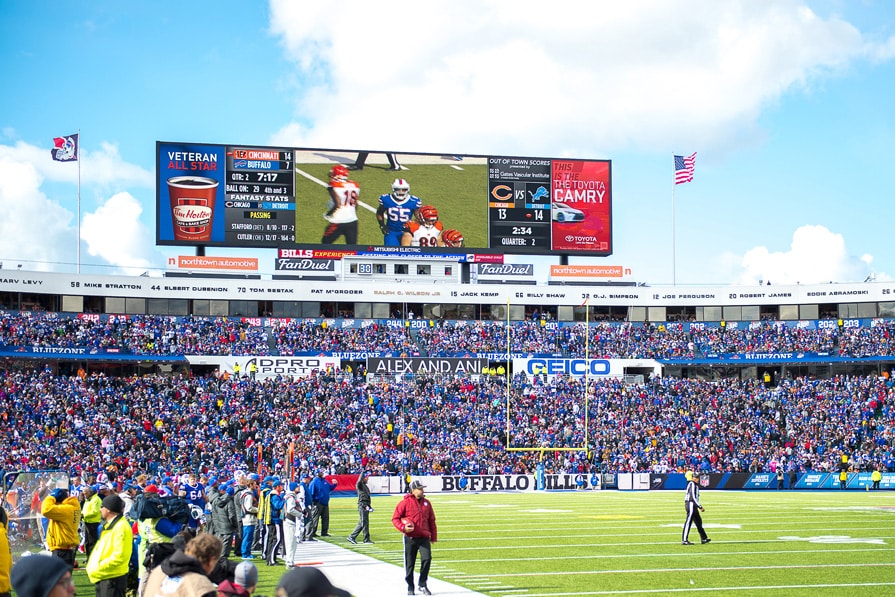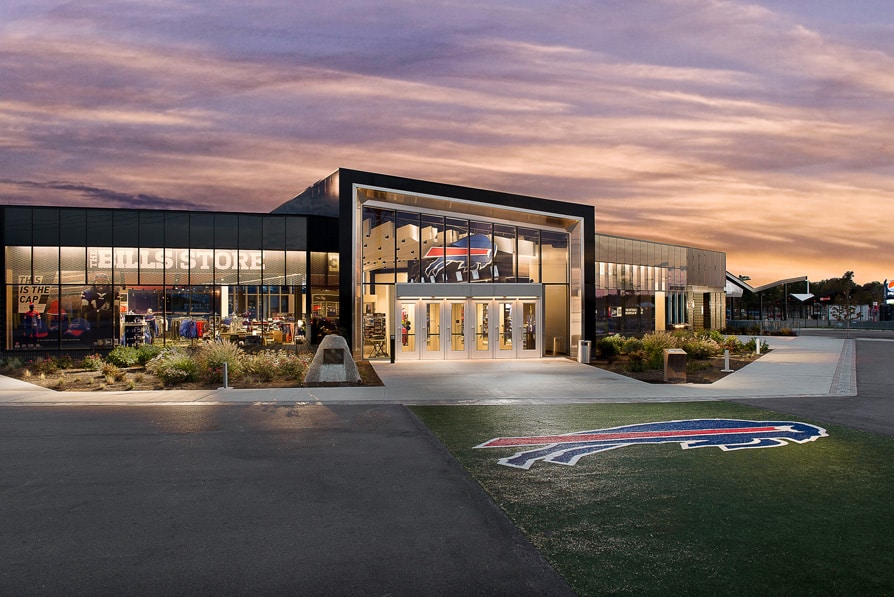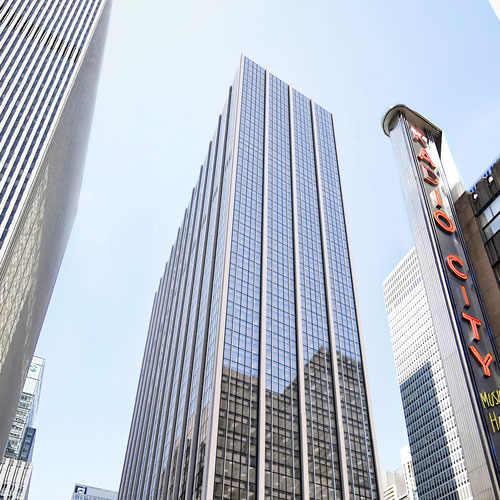When it comes to football stadiums, professional engineer Joe Frandina acknowledges that the team and game are far more important to fans than the structure.
“They don’t come to watch the building,” Frandina says.
He would know. Frandina’s been intimately involved with Ralph Wilson Stadium in Orchard Park, New York, as stadium manager since the mid-1990s. The stadium is the home of the Buffalo Bills National Football League franchise.
Yet, from his involvement with the 73,000-seat venue, he understands very well that the building can have an effect on fan experience. That’s why Frandina emerged from retirement—he left his position as the team’s vice president of operations in 2011, but returned in 2012—to work on a major renovation in the first seven months of 2014. The structure, which dates back to 1973, needed to be rewired for high-definition television broadcasting, crowd-flow issues into, out of, and around the stadium during games had to be revisited, and concessions and restrooms needed modernization. If that weren’t enough, the stadium’s single scoreboard that stood in place for more than 45 years was overdue for an upgrade as well.
The most visible part of the renovation was the reconfiguration and expansion of the video and scoreboard screens in “The Ralph,” named after long-time team owner Ralph Wilson, who died in March 2014 at the age of 95. The new scoreboard replacing it is 163 feet wide and in addition to the score includes video of the game, as well as advertisements and out-of-town game information. An end-zone tri-vision board that was put in place in 2007 was converted to video using the elements from the old single scoreboard. Two new video displays were constructed in the opposite end zone, where fantasy league stats are displayed on one screen and game action on the other.
Why so many screens? It’s all a part of a trend in professional league stadiums. The screens have not only been growing in size, but multiple screens are replicating to a certain degree what sports fans have at home. This includes satisfying the intense and growing interest in fantasy leagues, which can be done by switching channels or using mobile devices—factors that otherwise pull fans away from the stadium or at least distract them.
Even with Buffalo’s notorious “lake effect” weather, Frandina says the new scoreboards and video displays aren’t subject to damage from high winds.
“They are designed to exceed code requirements,” he says. In fact, the new board structures faced an early test in the fall of 2014 when the area received an historic, seven-foot snowfall. There was no resultant damage from wind or the weight of the precipitation.
BUFFALO UPGRADES TO HD
Before the 2014 renovation at Ralph Wilson Stadium, television broadcasters had to specially wire the facility for each game that would be broadcast. They literally had to string high-definition TV-transmitting wires from trucks to trees to cameras, a process that began on Wednesdays to prepare for a Sunday game. The added labor costs were considerable, making Buffalo a less-preferred home game to broadcasters. Now that those cables are installed into the structure, 18 different camera stations allow a plug-and-play setup much closer to the opening kickoff.
With regard to HDTV and the accommodation of broadcasters, Frandina says the Bills “went from the worst to the first in the NFL.” Not only is the newly installed wiring now at modern broadcasting standards, but so too is the booth where on-air personalities sit. Halftime commentary is provided in a much roomier setting.
Less obvious—but no less impactful—factors include various changes to concourses, entry gates, bathrooms, and food and beverage concession stations. As anyone who has attended major public events in recent years knows—particularly in sports stadiums—security measures have seen a marked increase. The FBI has intercepted communications with foreign terrorist groups that include images of several sports stadiums in the United States, and a Department of Homeland Security risk ranking places stadiums among the top 12 generic targets for attack. Worldwide, a total of $2 billion is spent on securing sports venues against terrorist threats. That applies to Buffalo as much as any other stadium location.
Consequently, the process of fans filing into stadiums everywhere is becoming more akin to the process of boarding an airplane. As per the NFL mandate, every fan is inspected at the gate. At the Ralph, the Bills organization actually reduced the number of gates from nine to six, but those six “super gates” are three to four times larger and have more lanes that can expedite fans’ entrance to the stadium. Just as important is the positioning of these gates, which are pulled outward from the stadium itself to create a concourse around the structure where concessions and landscaped walkways help fans find their way and provide better access to purchase food and beverages.
To keep foot traffic moving, the renovation also included wider staircases that replaced switchback stairs that were prone to trip and fall accidents. The design of these staircases allows more natural light into the Ralph to illuminate concourses as well.
Three new outbuildings were also added to the complex, freeing up more stadium space for both fans and the media. These additions include an 18,000-square-foot facilities building, a 33,000-square-foot commissary, and an 8,000-square-foot retail merchandise store. The team’s weight room, locker room, and a staff cafeteria were expanded or rebuilt.
“Almost all of this was geared to enhance the fan experience,” Frandina says.
He’s a good judge. The Buffalo native has been a Bills fan all his life, as have the six other engineers in the Frandina family: his brother, sister, nephews, a son, and late father. The University of Buffalo, his alma mater, named the family its Engineer of the Year in 2001. It’s not hard to imagine them checking out trusses and reinforced concrete wherever they go—before the game gets started, of course.





